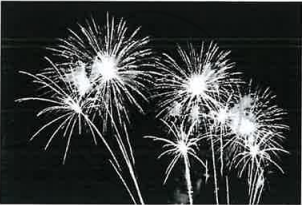Advertisements
Advertisements
प्रश्न
Write an Explanation.
Minimum distance of distinct vision
उत्तर
The minimum distance of an object from a normal human eye, at which it is clearly visible without stress on the eye is called as minimum distance of distinct vision.
APPEARS IN
संबंधित प्रश्न
Write the function of the following part of the human eye:- iris
Compare the following: Choroid and retina
Write short notes on the following: Retina
Describe the anatomy of the human eye.
Explain the mechanism of vision.
The optical prescription for a pair of spectacles is :
Right eye : −3.50 D
Left eye : −4.00 D
Are these lenses thinner at the middle or at the edges?
A person got his eyes tested by an optician. The prescription for the spectacle lenses to be made reads :
Left eye : +2.50 D
Right eye : +2.00 D
State whether these spectacle lenses will converge light rays or diverge light rays.
Name two types of cells in the retina of an eye which respond to light.
Fill in the following blank with suitable word:
Most of the refraction of light rays entering the eye occurs at the outer surface of the.............
List, in order, the parts of the eye through which light passes to reach the retina.
What happens to the size of pupil of our eye (i) in dim light (ii) in bright light?
The size of the pupil of the eye is adjusted by:
(a) cornea
(b) ciliary muscles
(c) optic nerve
(d) iris
The descriptions of five kinds of images are given below:
(a) diminished and virtual
(b) enlarged and real
(c) enlarged and erect
(d) real and inverted
(e) virtual and the same size
Which one of these describes the image formed:
(i) on the retina of the eye?
(ii) by a magnifying glass?
(iii) by a convex driving mirror on a car?
(iv) by a plane mirror?
(v) on the screen of a slide projector?
What shape are your eye-lenses:
when you look at your hand?
What shape are your eye-lenses:
when you look at a distant tree?
Explain why, when it is getting dark at night, it is impossible to make out the colour of cars on the road.
Out of animals of prey and predators, which have their eyes:
on the opposite sides of their head?
With reference to the functioning of the eye, answer the question that follow:
What is the shape of the lens during distant vision?
With reference to the functioning of the eye, answer the question that follow:
Name the cells of the retina and its respective pigments which get activated in the light.
What is the function of iris and the muscles connected to the lens in human eye?
What are the functions of tears?
Differentiate between:
Yellow spot and Blind spot.
Name the following:
Yellow spot and ciliary muscles are found in.
Give Technical Term:
The adjustment of the eye in order to obtain a clear vision of objects at different distances
Give Technical Term:
The fluid which conveys the vibrations of sound in the cochlea and semicircular canals.
State the Function:
Visual purple
Choose the Odd One Out:
Choose the Odd One Out:
Complete the following sentence with appropriate Word
The photoreceptor cells of the retina sensitive to colour are:
Write the name.
The fleshy screen behind cornea.
For a healthy human eye, the distant point is infinite distance.
Why the human eye is compared with camera?
Draw the struture of human eye and label its parts.
At noon the sun appears white as
We cannot distinguish colours in dim light. Explain giving suitable reasons.
Which cells of the retina enable us to see coloured objects around us?
Chris was watching the display of fireworks in the sky.

- Trace the path of the light rays using the following terms:
Fovea, Lens, Conjunctiva, Pupil, Cornea. - Name the nerve that carries the impulse for vision to the brain.
An aperture that controls the passage of light into the eye is ______.
Match the following:
| Column - I | Column - II |
| 1. Retina | a. Path way of light |
| 2. Pupil | b. Far point comes closer |
| 3. Ciliary muscles | c. near point moves away |
| 4. Myopia | d. Screen of the eye |
| 5. Hypermetropia | e. Power of accommodation |
